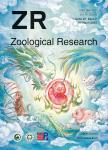The Potential of Rat Inner Cell Mass and Fetal Neural Stem Cells to Generate Chimeras
大鼠内细胞团和胎儿神经干细胞构建嵌合体的潜力(英文)作者机构:CopyRat Pty Ltd Clayton Victoria 3168 Australia Monash Immunology and Stem Cell Laboratories Monash University Clayton Victoria 3800 Australia 华南师范大学生命科学学院广东广州510631 Monash Animal Service Building 41 Monash University Wellington Road Clayton Victoria 3800 Australia
出 版 物:《Zoological Research》 (动物学研究(英文))
年 卷 期:2009年第30卷第2期
页 面:158-164页
核心收录:
学科分类:08[工学] 09[农学] 0901[农学-作物学] 0836[工学-生物工程] 090102[农学-作物遗传育种]
主 题:Rat chimeras Inner cell mass Rat fetal neural stem cells Blastocyst injection
摘 要:The rat chimera is an important animal model for the study of complex human diseases. In the present study we evaluated the chimeric potential of rat inner cell masses (ICMs) and fetal neural stem (FNS) cells. In result, three rat chimeras were produced by day 5 (D5) Sprague-Dawley (SD) blastocysts injected with ICMs derived from day 6 (D6) and D5 Dark Agouti (DA) blastocysts; four rat chimeras had been generated by D5 DA blastocyst injected with D5 SD ICMs. For the requirement of gene modification, cultured rat inner cell mass cells were assessed to produce chimeras, but no chimeras were generated from injected embryos. The potential to generate chimeras from rFNS and transfected rFNS cells were tested, but no chimeric pups were produced. Only 2 of 41 fetuses derived from D5 DA blastocyst injection with SD LacZ transfected rFNS cells showed very low number of LacZ positive cells in the section. These results indicate that DA and SD rat ICMs arc able to contribute to chimeras, but their potential decreases significantly after culture in vitro (P〈0.05), and rFNS cells only have the potential to contribute to early fetal development.



